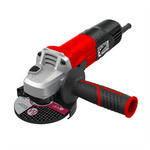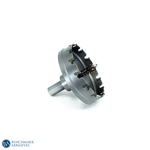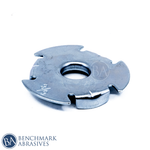
Industrial Applications of Abrasives

Abrasives are often utilized in a spread of the way by many various sorts of companies. Especially when you have products that require to be progressed to a completed state by buffing, sanding, grinding, or polishing, abrasives are needed. As long as the abrasive itself is more complex than the fabric you're trying to end, an abrasive will be an effective way of honing down any material to organize it to be used.
Abrasives contain minerals that will be naturally occurring or synthetic, like calcite, emery, pumice, sandstone, garnet, borazon, ceramic, steel abrasive, and carbide. When used for industrial applications like mining, construction, railroad, and wholesale/retail operations, usage falls into several categories, counting on the sort and shape of fabric to be finished.
Industrial Applications of Abrasives
In three simple versions, any industry utilizes abrasives. To shape concrete machines such as grinding wheels, cylinders, bands, cups, segments, or sticks, they may be bonded to a metal. As with sandpaper, they can be applied to paper, fabric, plastic, or any other material. Or, as when a splash of sand is used to clean the surface of a building while sandblasting, they can be practiced loosely.
Many industrial applications of abrasives fall into one of four general classifications.
- Cleansing means removing dirt and freckles from an object's surface. The use of grinding wheels to polish off the metal surface is one aspect.
- Shaping is the mechanism by which the desired structure is developed using an abrasive.
- Grinding is the shaping of metal.
- Sizing is a polishing method in which a surface is faded away by an abrasive until it finds an exact form.
- Cutting is the division into two separate parts of a material, as when a diamond saw is used to cut a portion of the metal through it.
Related Article: What Is An Industrial Abrasive
Abrasives Industrial Market
In today’s market, All industries are using abrasives in the manufacturing process. In the industrial sector, the abrasives primary usage include:
- Furniture, kitchen cabinets, and custom casework: Woodworking and manufacturing.
- Manufacturing of metal: manufacturing of light sheet metal, metal parts, and metal casework.
- Fiberglass, plastics, and composites: goods made for major producers or industries in the automobile, aircraft, and other sectors.
- Automotive builders.
- Aircraft and other producers in the aerospace industry.
- Marine Manufacturing Trades.
Abrasives Automotive Market
Automotive market uses abrasives in the process of repair and parts manufacturing applications. In the automotive sector, the primary usage of abrasives include:
- Maintenance and repair of automobiles: crash repair facilities, mechanical repair facilities, and customized painting facilities
- Manufacturers of automotive aftermarket products: custom components and aftermarket car and truck parts.



































































